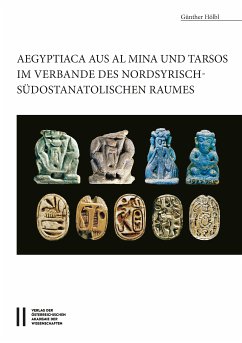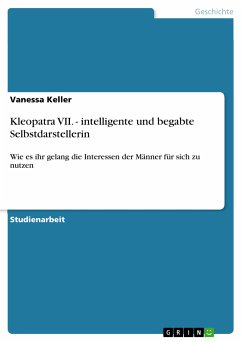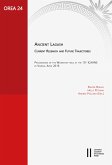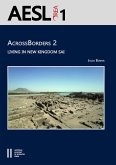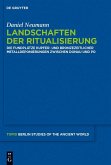Ein Hauptforschungsgebiet des Verfassers betrifft die Ausbreitung des ägyptischen Kulturgutes zur Eisenzeit in den Mittelmeerraum. Im vorliegenden Band, dem zusammenfassende Bearbeitungen der entsprechenden Aegyptiaca Altitaliens, des phönikisch-punischen Sardinien sowie der maltesischen Inseln vorausgegangen sind, werden in erster Linie die bislang unpublizierten Amulette und Skarabäen aus Al Mina an der Orontesmündung (heute Türkei) präsentiert. Ausführliche Kommentare mit Vergleichsmaterial aus Ägypten und dem gesamten Mittelmeerraum sowie die zum Teil farbige fotografische Dokumentation erläutern die einzelnen Stücke. Diese stammen aus den Grabungen von Sir Leonard Woolley der Jahre 1936 und 1937 und kamen mehrheitlich nach Antakya, aber auch ins Ashmolean Museum in Oxford und ins Britische Museum, London. Dem Katalog hinzugefügt wurden einerseits die Skarabäen aus Tarsos (Grabungen Hetty Goldman, 1934-38) in Neubearbeitung und andererseits erreichbare Streufunde von Skarabäen in den Museen von Adana und Gaziantep. Sie sollen dem besseren Verständnis der kulturellen und handelsmäßigen Wechselbeziehungen dienen, welche die Aegyptiaca vermitteln. Ein besonderes Anliegen ist die Herausarbeitung der Bedeutung der präsentierten Funde innerhalb des weiteren Bereiches um den Golf von Iskenderun in späthethitischer und neuassyrischer Zeit. Dafür konnten auch die vom Verfasser studierten, aber noch nicht in Veröffentlichungen fassbaren Aegyptiaca von den Tells der Amuq-Ebene (im Hinterland von Al Mina) herangezogen werden, die die amerikanischen Missionen der dreißiger Jahre des vorigen Jahrhunderts ans Licht gebracht hatten.
Dieser Download kann aus rechtlichen Gründen nur mit Rechnungsadresse in A, B, BG, CY, CZ, D, DK, EW, E, FIN, F, GR, HR, H, IRL, I, LT, L, LR, M, NL, PL, P, R, S, SLO, SK ausgeliefert werden.

